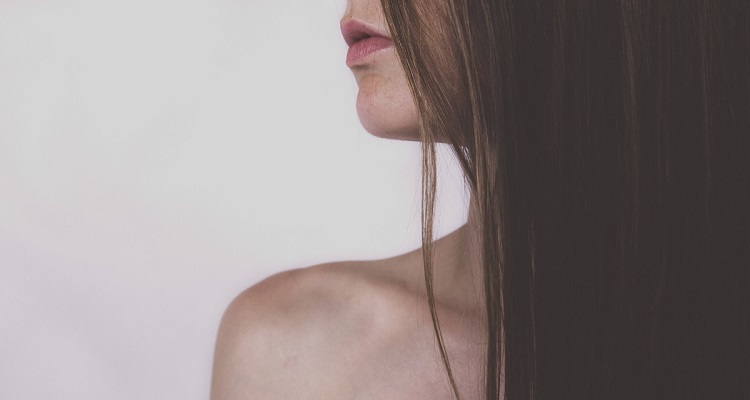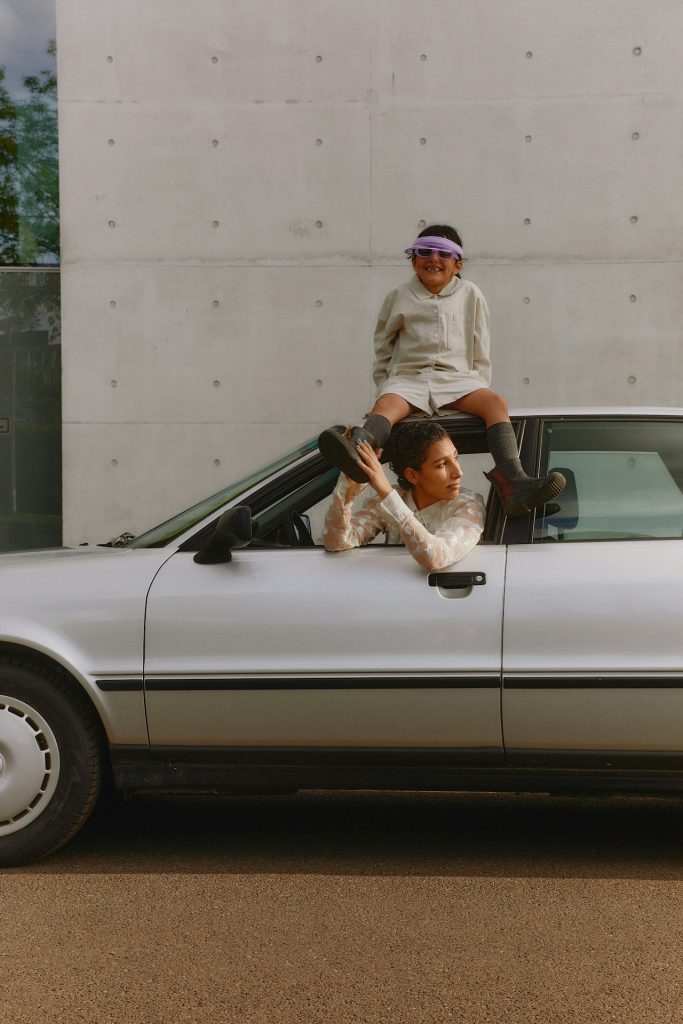“The hardest part for me was looking in the mirror for the first time to see the scars on my chest. Nothing prepares you for that moment,” says Renee Kaiman. “After my surgery, it took me a few weeks before I was able to mentally prepare myself to look.”
The young Toronto mom was diagnosed with breast cancer at 33 and underwent chemotherapy, a double mastectomy, and radiation.
Kaiman is just one in a growing number of Canadian women who will part with their breasts due to the threat or reality of breast cancer.
In recognition of National Breast Cancer Awareness Month (you must have noticed the flood of pink by now), I spoke with six brave women who have undergone mastectomies to find out the real, raw reality of how it really feels to lose your breasts.
“I think the hardest part was still trying to feel like a woman and feel beautiful. I lost not just my breasts but also my hair once I started chemo…two things that we as women and, more importantly, society use to define us as women to a large degree,” said Michelle Schaefer, a flight attendant from Alberta. “I know who I am as a person was never going to be changed by this disease…I was not going to allow it…despite the change in my exterior appearance, I was still ‘me’. I won’t lie, I miss them…every single day…and not because of what other people may think, but just for me.”
“I know who I am as a person was never going to be changed by this disease…I was not going to allow it…despite the change in my exterior appearance, I was still ‘me’. I won’t lie, I miss them…every single day…and not because of what other people may think, but just for me.”

Most of the women have very little time to emotionally prepare themselves for surgery in the first place, let alone the physical ramifications.
“I was diagnosed August 4, 2015…I saw my surgeon on August 9th and had a double mastectomy on August 13th,” said Schaeffer. “I am very much a ‘let’s get this done’ kind of person. I knew what I had to have done…surgery, chemo…in order to beat this, but more importantly I knew my attitude towards this would be the most important part of the fight.”
Ottawa’s Simone Marcantonio shares a similar experience.
“Besides the fact that I was dealing with a cancer diagnosis, about to go into surgery to amputate beloved body parts and lose all feeling in my chest area forever, I would say choosing what to do in an extremely short timeframe was the first challenging moment I experienced pre-surgery,” said Marcantonio. “I had two choices; both breasts or one breast only. The thing about me is that I have a hard time picking from a menu in a restaurant, so this was bizarre… should I get both done for vanity and sanity reasons or should I keep one real and one fake? I took both off and I have implants now and I have no regrets.”
As for Kaiman, she wanted to make sure she had something to remember her ladies by aside from a drawer full of bras.
“This is going to sound crazy, but I took pictures of my breasts before my double mastectomy. I wanted to remember what they looked like,” said Kaiman. “The night before my mastectomy I wrote a poem as a way of saying goodbye to them. I felt like I had to do something to honour them yet acknowledge that they were trying to kill me.”

But even if you do have all the time in the world, how can you really ever prepare for losing a part of your body that’s defined your femininity since puberty?
“I was an emotional wreck. I was extremely nervous for surgery, as I’d never had a surgery where I was put under before. I didn’t do much to prepare, just tried to remain calm,” said Paige Hunter. “When waiting to go into the surgery room, though, the surgeon, anesthesiologist and the OR nurse came to see me, each separately. Their comforting words were very helpful. In particular, the OR nurse had been through breast cancer herself. Knowing that calmed me considerably. It was a huge asset, having her there.”
It was important for many of these women to share their experiences, so some started blogs; not only for therapeutic reasons but also to educate and support other women.
“I know it sounds cliché but writing a blog called Breasts in the City really helped me even though it was very emotional to write,” says Marcantonio. Kaiman also continues to share her journey on her blog after blogging her way though her diagnosis and treatment.
The women share it all: the positive, bad and ugly about breast cancer. None of the women – bloggers or not – sugarcoat their experience.
Some days, it really just sucks.
As for the recovery, there were a few surprises for the women – good and bad – and ones they want other breast cancer battlers to be aware of.
“The biggest learning experience I encountered was later on in the process about how vital the rehabilitation component was, and still is, to a faster recovery,” said Marcantonio. “Going to rehab was life-changing as a breast cancer patient and I wish I had known about it from day one.”
Hunter agrees.
“I didn’t really realize how much mobility you lose. I was surprised at how limited I was and for how long. Physio really helped,” said Hunter. “Also, it was difficult to find clothing that I could wear and feel pretty in before I got my prostheses. Otherwise, I never really noticed they were gone except for in clothing.”
And the clothing thing is a big issue once you’ve had a mastectomy.
“Clothes are made to fit two breasts. Doesn’t matter if it’s a dress or a tank top,” says Kaiman. “Clothes shopping post mastectomy has really been awful. So once where I use to enjoy shopping I now don’t.”
But it’s not all negative – and some women actually find the recovery process relatively easy.
“The biggest surprise was how quickly I healed – I was young and had no infections and was back to myself very quickly,” said Alicia Tait, who was diagnosed with triple negative stage 3 breast cancer at the age of 23 and had a 4-month-old daughter at the time. She had a bilateral mastectomy with immediate reconstruction when she was 27.
It wasn’t just physical, either.
“The biggest learning experience I had was that I didn’t need my real breasts to make me feel like a “real woman,” said Tait. “It was hard at first, but I feel more confident now then I did before. My mind is free of worry that had almost consumed me before my surgery and I feel like I can live my life now to be happy with my kids and my family and try to encourage and support other women going through the same thing.”

The option of reconstructive surgery is a comforting one for many.
“The percentage of women pursuing reconstruction has increased dramatically over the past 10-15 years due to growing population and media awareness, patient expectations and evolving surgical skills and techniques,” said Dr. Zel Krajden M.D., a Toronto-based plastic surgeon.
This number includes both breast cancer patients and the increasing number of women who are opting for mastectomies and reconstructive surgery for preventative measures (part of which, Dr. Krajden says, is attributed to the “Angelina Jolie effect”).
“Reconstruction can be tailored to match an individual’s goals and overall body habitus with regards to shape and size and proportionality,” said Dr. Krajden.
Of course, there are on-going challenges.
Tait and Stephanie Gilman, who was diagnosed at 28 in September 2012 and had a bilateral mastectomy with reconstruction, share sadness in not being able to breastfeed their babies.
Not only is it emotional, it’s also costly.
“Now, I’m dealing with the fact that I won’t be able to breastfeed my child (I am pregnant) which is difficult in itself for many reasons,” said Gilman. “It also means a huge expense that I may have not had otherwise.”

For all of the woman, perhaps the biggest surprise through their whole journey is the strength they found both within themselves and from their family and loved ones.
It’s a story we hear time and again from cancer-fighters, but one that couldn’t ring truer.
“The strength I had came from my children. I refused to look weak around them but I didn’t hide a lot from them either,” said Tait, who lets her kids see her scars and answers their questions honestly. “My son was two years old and my daughter was four. I was determined to be a positive influence on my daughter and the other women around me.”
Kaiman’s children were similar in age – her daughter was 3.5 years old and her son was 1.5 years old – at the time of her diagnosis.” I said the entire time that my kids were the best medicine for me and I believe that with all of my heart. I forced myself to do stuff and get out of bed each day for them,” she says.
“Everyone always thinks, ‘I could never get through something like that’ or ‘I couldn’t deal with the pain,’” says Gilman. “I don’t really think I am brave, I just did what I had to do and what I felt would give me the best chance to survive. When your life is at risk, you find you’re suddenly capable of dealing with a lot more than you ever imagined.”
If you know a woman who is currently about to undergo or recovering from a mastectomy, Rethink Breast Cancer has created Give-A-Care, a line of products exclusively for women battling breast cancer, including a sponge and a hoodie.









